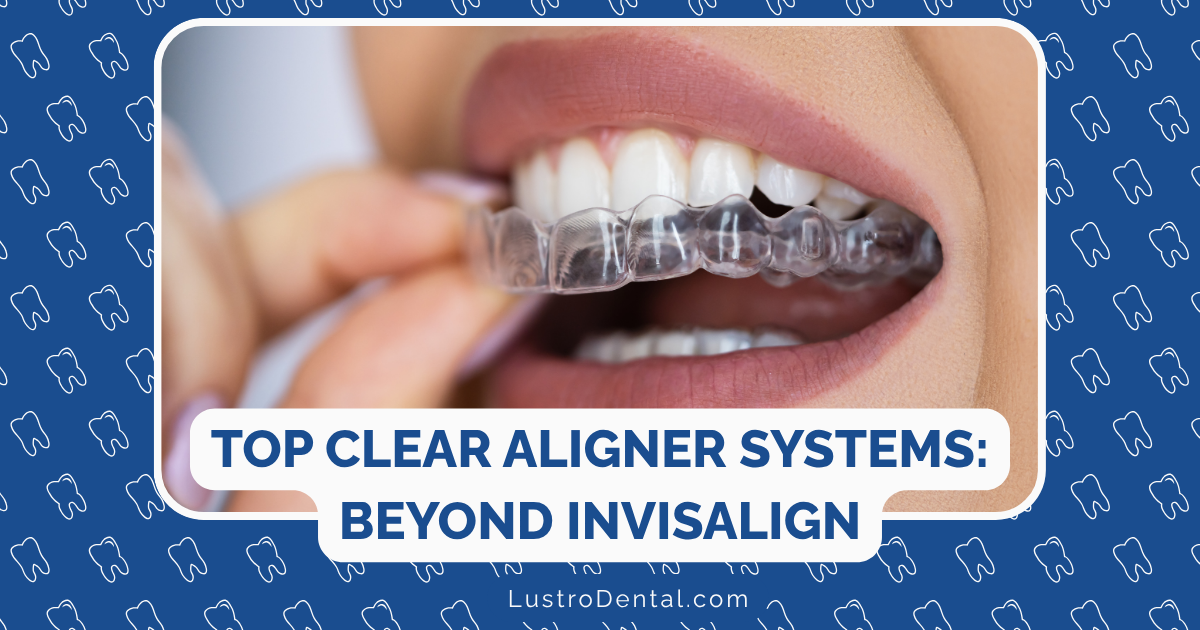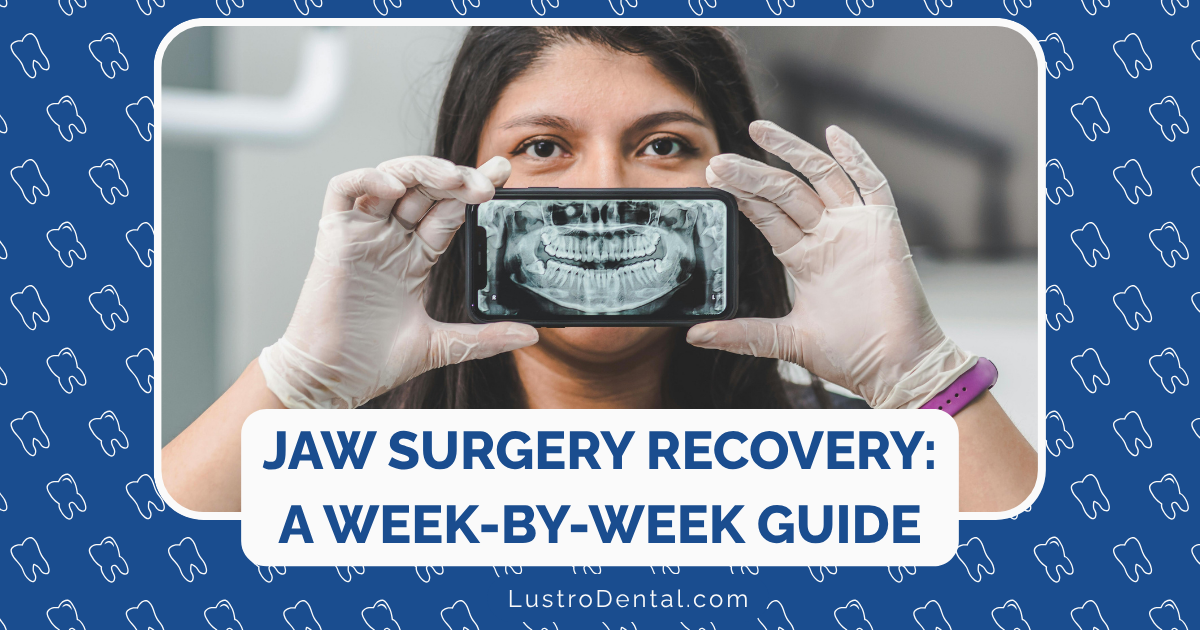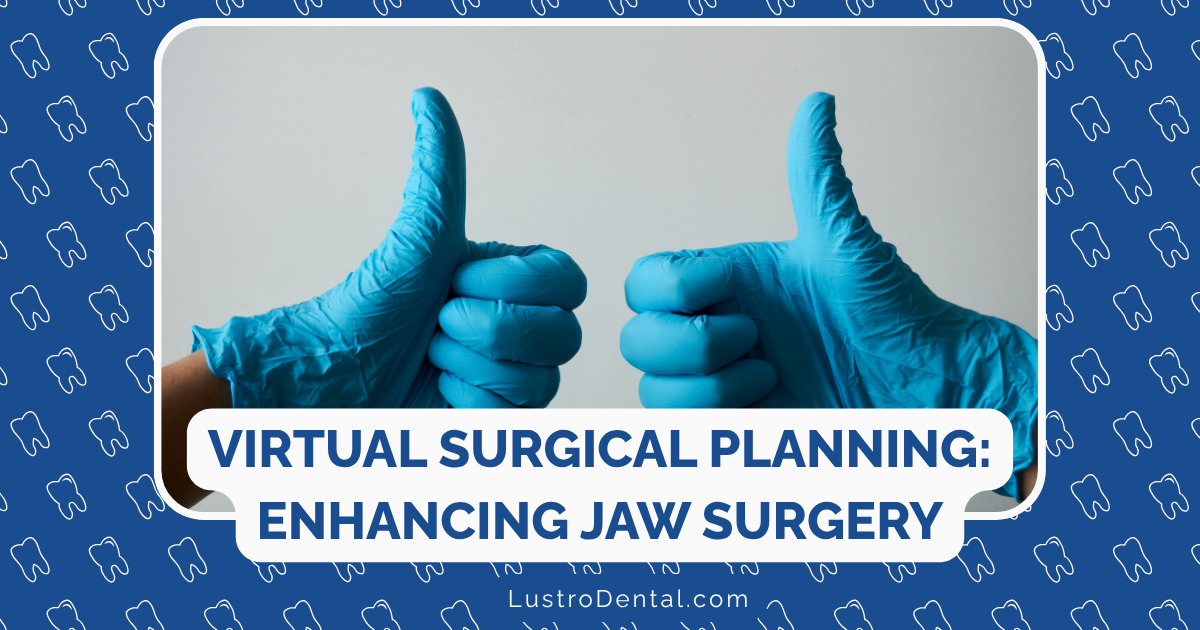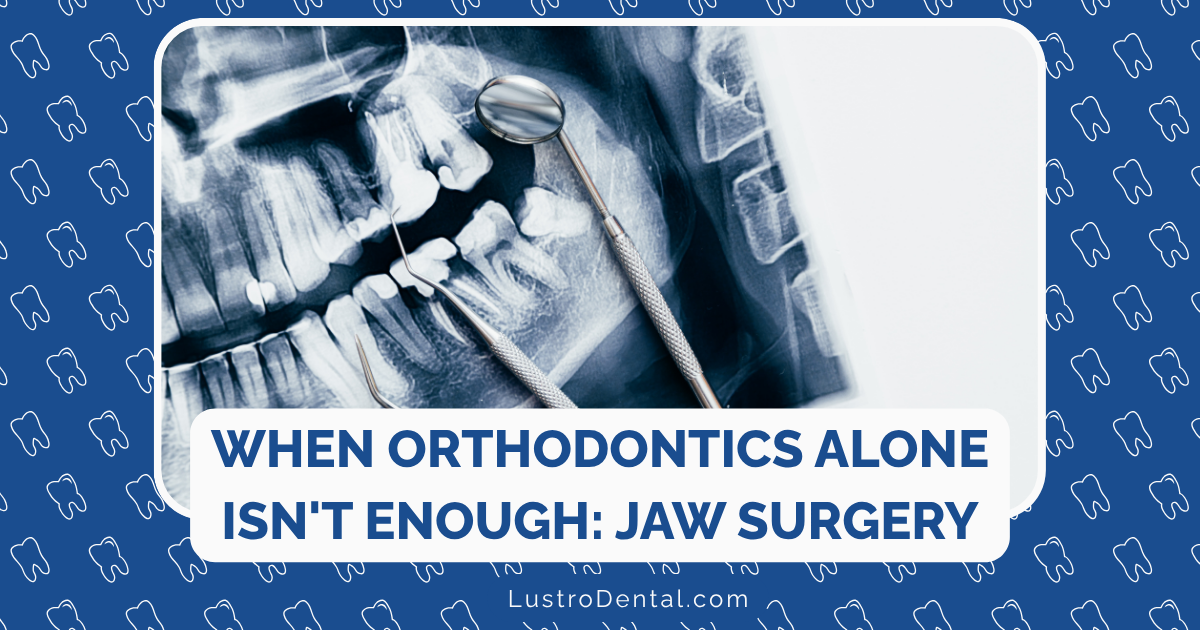Beyond Invisalign: Comparing the Top Clear Aligner Systems of 2025

When Invisalign first revolutionized orthodontic treatment in the late 1990s, the idea of straightening teeth without metal braces seemed almost magical. Fast forward to 2025, and the clear aligner landscape has transformed dramatically. What was once a single-player market has evolved into a diverse ecosystem of innovative options, each with unique technologies, treatment approaches, and price points.
As someone who’s worked closely with orthodontic patients for years, I’ve witnessed this evolution firsthand. Today’s patients face a wealth of choices that extend far beyond the Invisalign brand—choices that can be both empowering and overwhelming.
In this comprehensive guide, I’ll take you beyond the Invisalign hype to explore the top clear aligner systems of 2025, comparing everything from cutting-edge technology and treatment effectiveness to cost considerations and environmental impact. Whether you’re considering treatment for yourself or researching options for a loved one, this unbiased comparison will help you navigate the increasingly complex world of clear aligners.
The Clear Aligner Landscape in 2025: A Market Transformed
Before diving into specific brands, let’s understand how dramatically the market has evolved. According to recent industry reports, the global clear aligner market reached $8.3 billion in 2024 and is projected to surge to $29.9 billion by 2030—growing at an impressive CAGR of 23.8%.
This explosive growth has been fueled by several factors:
- Technological advancements in materials, manufacturing, and digital planning
- Increased consumer demand for aesthetic orthodontic options
- Expanded treatment capabilities allowing aligners to address more complex cases
- The rise of telehealth and remote monitoring solutions
- Growing acceptance by dental professionals as viable alternatives to traditional braces
The result? A market that offers more choices, greater accessibility, and increasingly sophisticated treatment options for patients of all ages.
Top Clear Aligner Systems of 2025: Head-to-Head Comparison
Let’s examine the leading clear aligner systems of 2025, comparing their key features, technologies, and treatment approaches.
1. Invisalign (Align Technology)
The Pioneer That Continues to Innovate
As the original clear aligner system, Invisalign has maintained its market leadership through continuous innovation. In 2025, Invisalign offers:
Key Features:
- SmartTrack material technology for predictable tooth movement
- iTero Element scanners for highly accurate digital impressions
- ClinCheck Pro software with AI-enhanced treatment planning
- SmartForce attachments for complex tooth movements
- Mandibular advancement features for simultaneous Class II correction
Treatment Process:
- In-office treatment supervised by Invisalign-trained dentists or orthodontists
- Regular in-person check-ups (typically every 6-10 weeks)
- Comprehensive remote monitoring through the MyInvisalign app
Ideal For:
- Complex orthodontic cases requiring precise control
- Patients who value in-person professional supervision
- Those with dental insurance that specifically covers Invisalign
Average Treatment Time: 6-18 months, depending on case complexity
Average Cost Range: $3,000-$8,000
Sustainability Efforts: Align Technology has implemented a recycling program for aligners and introduced plant-based packaging materials, though the aligners themselves remain primarily plastic-based.
Latest Innovations: Invisalign’s 2025 platform includes enhanced AI prediction models that have reduced the need for refinements by 23% compared to their 2022 system.
2. Angel Aligners
The Rising Challenger With Advanced Technology
Relatively new to the market but gaining significant traction, Angel Aligners has emerged as a serious competitor with its focus on technological innovation and orthodontist-led treatment.
Key Features:
- Multi-layered aligner material with gradient flexibility
- Proprietary edge-finishing technology for superior comfort
- AI-driven treatment planning with biomechanical optimization
- Precision-engineered attachments for complex movements
- Integrated wear-time sensors for compliance monitoring
Treatment Process:
- Exclusively provided through orthodontists (not general dentists)
- Hybrid model with fewer in-office visits supplemented by advanced remote monitoring
- Real-time treatment tracking through the Angel Connect platform
Ideal For:
- Patients seeking orthodontist-only treatment with fewer office visits
- Complex cases requiring specialized biomechanical approaches
- Tech-savvy patients comfortable with digital monitoring
Average Treatment Time: 6-12 months for most cases
Average Cost Range: $2,500-$5,500
Sustainability Efforts: Angel Aligners uses recyclable materials for 80% of its packaging and offers a comprehensive recycling program. The company has also committed to carbon-neutral manufacturing by 2026.
Latest Innovations: Their proprietary Angel Tracking System uses machine learning to detect treatment deviations early, allowing for immediate course correction without waiting for the next scheduled appointment.
3. Spark Aligners (Ormco)
The Premium Alternative Focused on Comfort and Clarity
Spark has positioned itself as a premium alternative to Invisalign, emphasizing material benefits and aesthetic advantages.
Key Features:
- TruGEN XR material with enhanced clarity and stain resistance
- Polished, scalloped edges for improved comfort
- Spark Approver software for streamlined case planning
- Compatible with major intraoral scanner systems
- Broader coverage of gingival areas for better force distribution
Treatment Process:
- In-office treatment provided by orthodontists and select dentists
- Traditional appointment schedule similar to Invisalign
- Optional remote monitoring through partner platforms
Ideal For:
- Patients prioritizing aesthetics and comfort
- Those with sensitivity to traditional aligner materials
- Cases requiring exceptional clarity for professional settings
Average Treatment Time: 6-18 months
Average Cost Range: $3,500-$7,500
Sustainability Efforts: Spark’s parent company, Ormco, has implemented energy-efficient manufacturing processes and reduced packaging waste by 35% since 2023.
Latest Innovations: The 2025 TruGEN XR material shows 30% less clouding after two weeks of wear compared to previous generations and competing products.
4. ClearCorrect
The Accessible Alternative With Proven Results
ClearCorrect has established itself as a slightly more affordable alternative to Invisalign without compromising on treatment quality.
Key Features:
- Tri-layer ClearQuartz material for durability and clarity
- Optimized trim lines for enhanced comfort and retention
- CC Flex graduated force system for efficient tooth movement
- Integrated with the 3Shape TRIOS scanner ecosystem
- Frenotomy-accommodating designs for patients with tongue ties
Treatment Process:
- In-office treatment supervised by dentists or orthodontists
- Standard appointment schedule (every 6-8 weeks)
- Basic remote monitoring capabilities
Ideal For:
- Patients seeking a balance between cost and in-office supervision
- Cases requiring specific force applications
- Those with compatible dental insurance plans
Average Treatment Time: 6-18 months
Average Cost Range: $2,500-$6,000
Sustainability Efforts: ClearCorrect has reduced its carbon footprint by implementing solar power in manufacturing facilities and offers a mail-back recycling program.
Latest Innovations: Their new CC Flex graduated force system introduced in late 2024 applies different pressure levels throughout the treatment, potentially reducing treatment time by up to 15%.
5. SureSmile Aligners
The Precision-Focused System With Advanced Digital Planning
SureSmile leverages its long history in digital orthodontics to offer a highly precise clear aligner option.
Key Features:
- Digital treatment planning with OraScanner technology
- Elemetrix physics-based movement prediction
- Customizable attachment designs for specific tooth movements
- Integration with CBCT imaging for root-level planning
- Automated collision detection to prevent unrealistic movements
Treatment Process:
- In-office treatment with dentist or orthodontist supervision
- Typically requires fewer office visits than traditional systems
- Enhanced digital communication between provider and patient
Ideal For:
- Technically complex cases requiring precise movement planning
- Patients with specific concerns about root positioning
- Those who prefer fewer in-office visits
Average Treatment Time: 6-15 months
Average Cost Range: $2,800-$6,000
Sustainability Efforts: SureSmile has implemented biodegradable packaging and offers practice-based recycling stations for used aligners.
Latest Innovations: Their 2025 Elemetrix 4.0 software update includes AI-enhanced root movement prediction, reducing the risk of root resorption during treatment.
6. 3M Clarity Aligners
The Material Science Leader
Leveraging 3M’s extensive material science expertise, Clarity Aligners offer unique benefits in comfort and force application.
Key Features:
- Proprietary Smart Force Attachment System
- Multi-layer polymer material with controlled force delivery
- Precision-trimmed edges based on individual gingival architecture
- Integrated with 3M’s extensive orthodontic ecosystem
- Specialized retention protocols for long-term stability
Treatment Process:
- Traditional in-office treatment model
- Regular check-ups with specialized progress tracking
- Limited remote monitoring capabilities
Ideal For:
- Patients with sensitive gingival tissues
- Cases requiring specific force applications
- Those already in the 3M orthodontic ecosystem
Average Treatment Time: 8-18 months
Average Cost Range: $3,000-$7,000
Sustainability Efforts: 3M has implemented a comprehensive sustainability program focusing on reducing plastic waste and energy consumption in manufacturing.
Latest Innovations: Their Smart Force Attachment System introduced in 2024 allows for more precise control of complex tooth movements with fewer attachments than competing systems.
Direct-to-Consumer Options in 2025: Have They Evolved?
The direct-to-consumer (DTC) clear aligner market has undergone significant changes since its controversial beginnings. Let’s examine how these options have evolved by 2025:
Byte (Dentsply Sirona)
After its acquisition by dental giant Dentsply Sirona, Byte has transitioned to a hybrid model that combines remote treatment with professional oversight.
Key Features:
- HyperByte vibration technology for accelerated treatment
- At-home impression kits with video guidance
- Remote orthodontist supervision throughout treatment
- Weekly virtual check-ins via the Byte app
- Limited case selection based on complexity screening
Average Treatment Time: 3-6 months for mild cases
Average Cost: $1,999-$2,500
Notable Changes: Following regulatory scrutiny in 2023-2024, Byte now requires an initial in-person examination before treatment can begin, addressing previous safety concerns while maintaining convenience.
AlignerCo
Positioning itself as the most affordable option, AlignerCo continues to offer a fully remote experience.
Key Features:
- Simplified treatment planning for mild to moderate cases
- Basic aligner material without advanced features
- Limited customization options
- Minimal professional oversight
- Emphasis on cost accessibility
Average Treatment Time: 4-8 months
Average Cost: $995-$1,145
Limitations: AlignerCo is only suitable for very mild cosmetic cases and lacks the technological sophistication of professional systems.
The DTC Verdict in 2025
While direct-to-consumer options have improved their safety protocols and professional oversight, they remain suitable primarily for mild cosmetic cases. The American Association of Orthodontists continues to emphasize the importance of comprehensive examination and professional supervision for orthodontic treatment.
Dr. Sarah Johnson, an orthodontist at Metropolitan Orthodontics, explains: “The hybrid models emerging in 2025 are a step in the right direction, but they still can’t replace the comprehensive care provided by an in-person orthodontist, especially for anything beyond the simplest cases.”
Technology Innovations Transforming Clear Aligners in 2025
The clear aligner market of 2025 is characterized by several technological breakthroughs that have enhanced treatment effectiveness, comfort, and convenience:
1. Advanced Materials Science
Multi-layered Polymers: The latest aligners use gradient materials that combine rigid and flexible layers, applying optimal force to different parts of the tooth.
Self-adjusting Materials: Some systems now incorporate shape-memory polymers that respond to mouth temperature, maintaining consistent pressure throughout the wear period.
Enhanced Clarity: New manufacturing processes have virtually eliminated the clouding and staining that plagued earlier generations of aligners.
2. Artificial Intelligence Integration
Predictive Movement Modeling: AI algorithms analyze thousands of similar cases to predict individual tooth movement with unprecedented accuracy.
Treatment Optimization: Machine learning systems can now identify potential issues before they occur, allowing for preemptive adjustments to treatment plans.
Personalized Wear Schedules: AI analyzes individual response rates to customize aligner change intervals, potentially reducing treatment time.
3. Advanced Monitoring Systems
Embedded Sensors: Some premium aligner systems now include microsensors that track wear time, temperature, and pressure distribution.
Smartphone-Based Tracking: Advanced scanning algorithms allow patients to take progress photos that are automatically analyzed for treatment tracking.
Preemptive Problem Detection: Remote monitoring systems can identify when treatment is veering off course, triggering intervention before significant deviations occur.
4. 3D Printing Advancements
Direct Printed Aligners: Some systems now 3D print aligners directly rather than thermoforming them over models, allowing for more intricate designs.
Integrated Attachment Printing: Advanced systems can print attachments directly into the aligner, eliminating the need for separate bonding procedures.
In-Office Production: More orthodontists are bringing aligner production in-house with industrial-grade 3D printers, reducing turnaround time and allowing for immediate refinements.
Cost Considerations: Beyond the Sticker Price
When comparing clear aligner systems, the advertised price is just the beginning. Here’s what to consider when evaluating the true cost:
Insurance Coverage
Insurance coverage for clear aligners has expanded significantly by 2025, but policies vary widely:
- Traditional Dental Insurance: Many plans now cover clear aligners at the same rate as conventional braces (typically 50% up to a lifetime maximum of $1,500-$3,000).
- Orthodontic-Specific Coverage: Some employers offer supplemental orthodontic insurance with higher coverage limits.
- Health Savings Accounts (HSAs) and Flexible Spending Accounts (FSAs): These tax-advantaged accounts can be used for clear aligner treatment.
Hidden Costs to Consider
- Refinements: Some systems include unlimited refinements, while others charge additional fees.
- Retainers: Post-treatment retainers may or may not be included in the quoted price.
- Emergency Visits: Consider whether unscheduled appointments incur additional fees.
- Lost Aligner Replacement: Policies for replacing lost aligners vary significantly between providers.
Financing Options
Most clear aligner providers offer financing plans:
- In-house Financing: Many orthodontists offer interest-free payment plans.
- Third-party Financing: Companies like CareCredit and Affirm provide healthcare-specific financing options.
- Subscription Models: Some newer systems offer monthly subscription plans rather than lump-sum payments.
Case Complexity: Matching the Right System to Your Needs
Not all clear aligner systems are equally effective for all orthodontic issues. Here’s a general guide to which systems work best for different conditions:
Mild Crowding or Spacing
Best Options: Most systems, including Invisalign, Angel Aligners, Spark, ClearCorrect, and even some DTC options for very mild cases.
Why: Simple tooth movements require less specialized technology and can be effectively treated by most systems.
Moderate to Severe Crowding
Best Options: Invisalign, Angel Aligners, Spark, SureSmile
Why: These cases require precise control of tooth movements and often need specialized attachments and elastics.
Deep Bite Correction
Best Options: Invisalign, Angel Aligners, 3M Clarity
Why: Correcting deep bites requires specific biomechanical approaches and often benefits from the specialized attachment systems these providers offer.
Open Bite Treatment
Best Options: Invisalign, SureSmile, Angel Aligners
Why: Open bite correction is biomechanically challenging and requires sophisticated digital planning and precise force application.
Crossbite Correction
Best Options: Invisalign, Spark, 3M Clarity
Why: Crossbites often require expansion and rotation movements that benefit from these systems’ advanced attachment designs.
Extraction Cases
Best Options: Invisalign, SureSmile, Angel Aligners
Why: Managing space closure after extractions requires precise control of tooth movement to prevent tipping and rotation.
The Sustainability Factor: Environmental Impact of Clear Aligners
As environmental consciousness grows, the sustainability of clear aligner treatment has become an important consideration for many patients.
The Environmental Challenge
A typical clear aligner treatment produces significant plastic waste:
- 20-30 sets of aligners per treatment
- Packaging materials
- Impression materials (for non-digital workflows)
- Attachment materials
How Companies Are Responding
Recyclable Materials: Several companies now use recyclable plastics for their aligners, though these still require specialized recycling processes.
Take-Back Programs: Most major aligner companies offer programs to collect and recycle used aligners.
Reduced Packaging: Many have minimized packaging and switched to recyclable or biodegradable materials.
Carbon Offset Programs: Some companies have implemented carbon offset initiatives to balance their manufacturing footprint.
Most Sustainable Options in 2025:
- Angel Aligners: Leading the pack with biodegradable packaging, a comprehensive recycling program, and carbon-neutral manufacturing commitments.
- Spark Aligners: Close second with energy-efficient manufacturing and significant packaging waste reduction.
- Invisalign: Making progress with their recycling program and plant-based packaging initiatives.
The Patient Experience: Comfort, Convenience, and Compliance
Beyond clinical effectiveness, the patient experience varies significantly between systems:
Comfort Factors
Edge Design: Systems with polished, scalloped edges (like Spark and Angel Aligners) tend to cause less gingival irritation.
Material Flexibility: Multi-layered materials with gradient flexibility (found in premium systems) typically provide a more comfortable experience.
Attachment Requirements: Some systems require fewer or smaller attachments, improving both comfort and aesthetics.
Convenience Considerations
Appointment Frequency: Systems with advanced remote monitoring typically require fewer in-office visits.
Treatment Duration: Some systems advertise faster treatment times, though this varies significantly by individual case.
Cleaning Requirements: Certain aligner materials are more resistant to staining and buildup, requiring less maintenance.
Compliance Technology
Wear Indicators: Some systems include color-changing indicators to show whether aligners have been worn for sufficient time.
Embedded Sensors: Premium options may include microsensors that track actual wear time.
Reminder Systems: Most aligner systems now come with apps that provide wear time reminders and tracking.
Making Your Decision: Questions to Ask Your Provider
When consulting with orthodontic professionals about clear aligner options, consider asking these questions:
- Based on my specific case, which clear aligner system would you recommend and why?
- What is your experience level with this particular system?
- Can you show me before-and-after cases similar to mine treated with this system?
- What is the total cost, and what exactly does that include?
- How many office visits will be required, and is remote monitoring an option?
- What happens if my teeth don’t track as expected?
- Are refinements included, and if so, how many?
- What retention protocol do you recommend after treatment?
- How does the warranty work if I’m not satisfied with the results?
- What are the sustainability practices associated with this system?
The Future of Clear Aligners: What’s Next Beyond 2025?
As we look to the horizon, several emerging technologies promise to further transform the clear aligner experience:
Biodegradable Aligners
Research is advancing on fully biodegradable aligner materials that maintain the necessary strength and clarity while reducing environmental impact.
Medication-Eluting Aligners
Future aligners may release small amounts of compounds that enhance tooth movement or reduce discomfort, potentially accelerating treatment.
Fully Customized Force Systems
Next-generation systems will likely apply different forces to individual teeth within the same aligner, optimizing movement efficiency.
Integration with Overall Health Monitoring
Smart aligners may eventually monitor oral pH, detect inflammatory markers, or even track overall health parameters.
Conclusion: Finding Your Perfect Clear Aligner Match
The clear aligner market of 2025 offers more choices than ever before, with options tailored to virtually every clinical situation, budget, and personal preference. While Invisalign continues to be a strong contender with its long track record and continuous innovation, competitors like Angel Aligners, Spark, and SureSmile have introduced compelling alternatives with unique advantages.
The best system for you depends on your specific orthodontic needs, budget considerations, and personal priorities regarding factors like aesthetics, comfort, and sustainability. By working closely with a qualified orthodontic professional and asking the right questions, you can navigate these choices to find the perfect clear aligner match for your smile journey.
Remember that regardless of which system you choose, the expertise of the provider overseeing your treatment remains one of the most critical factors in achieving optimal results. The technology is impressive, but it’s the skilled hands guiding that technology that ultimately create beautiful, healthy smiles.
What has been your experience with clear aligners? Are there specific systems you’re curious about? Share your thoughts and questions in the comments below!







